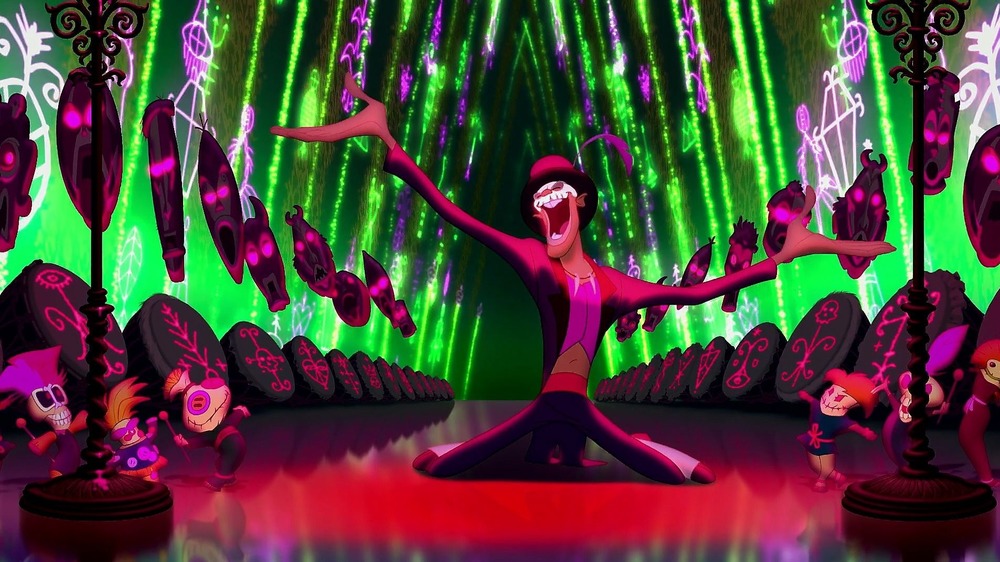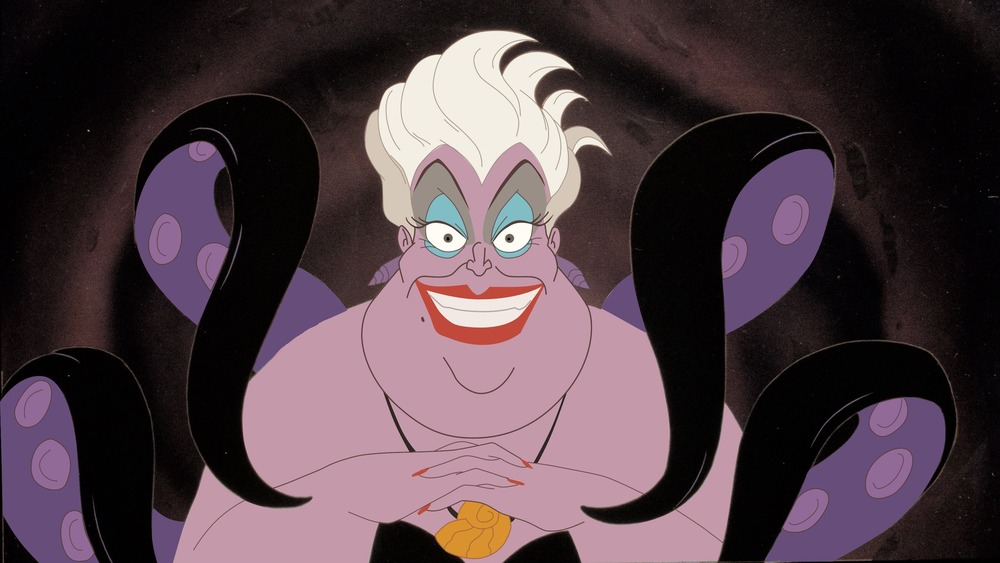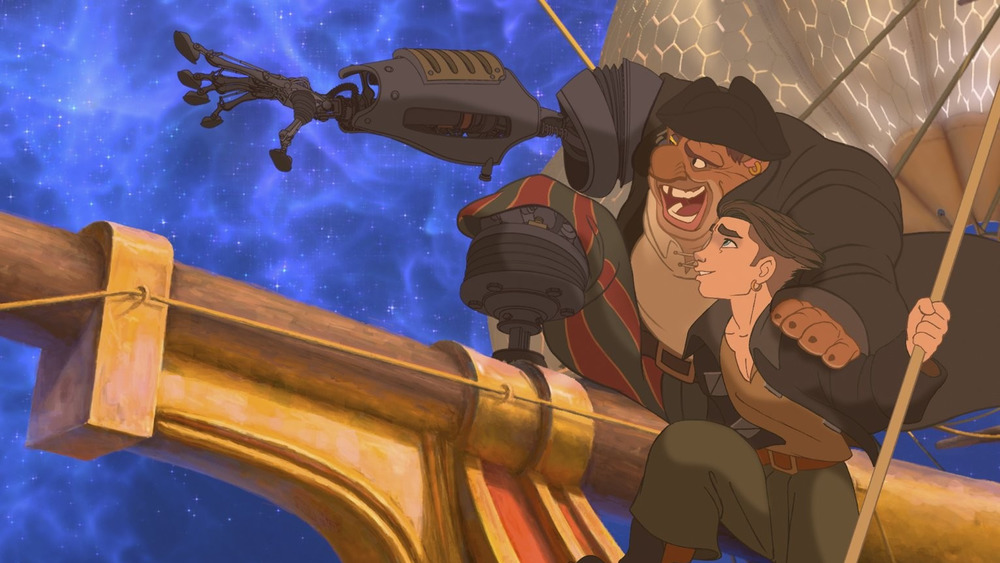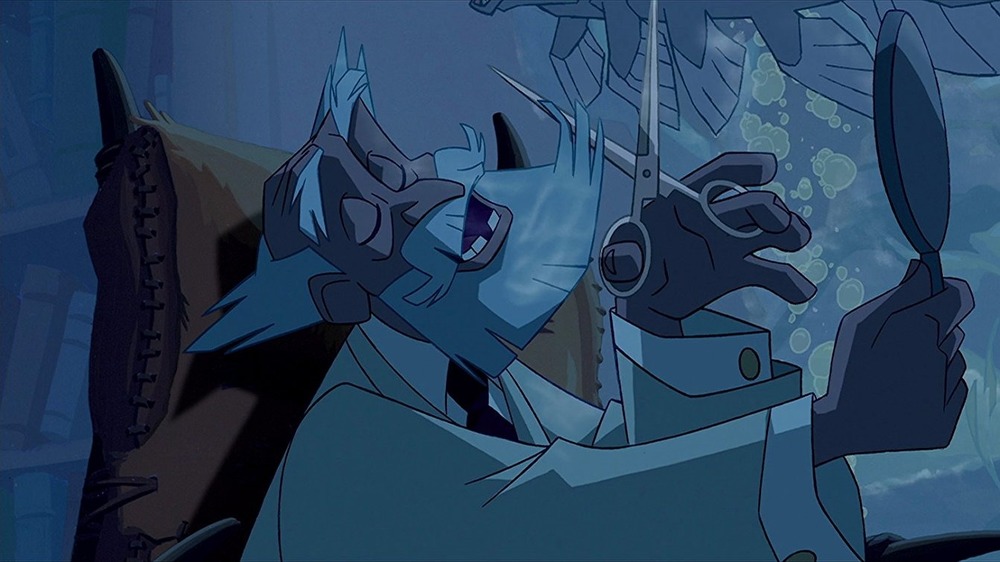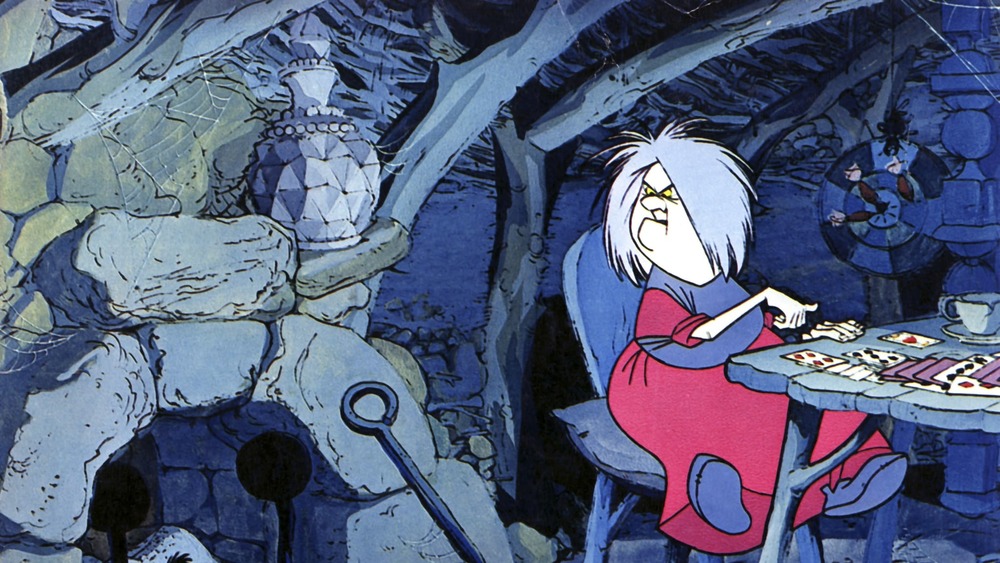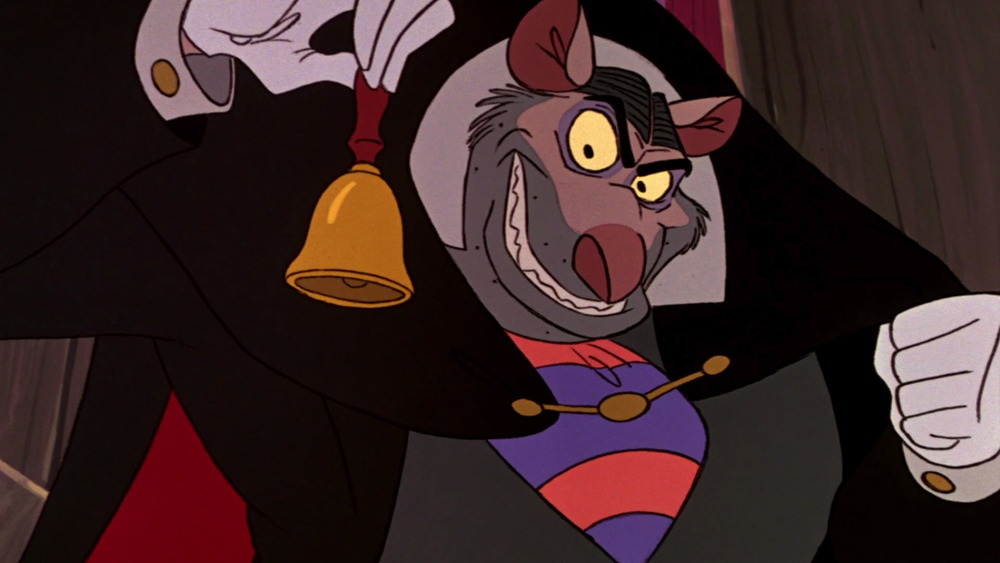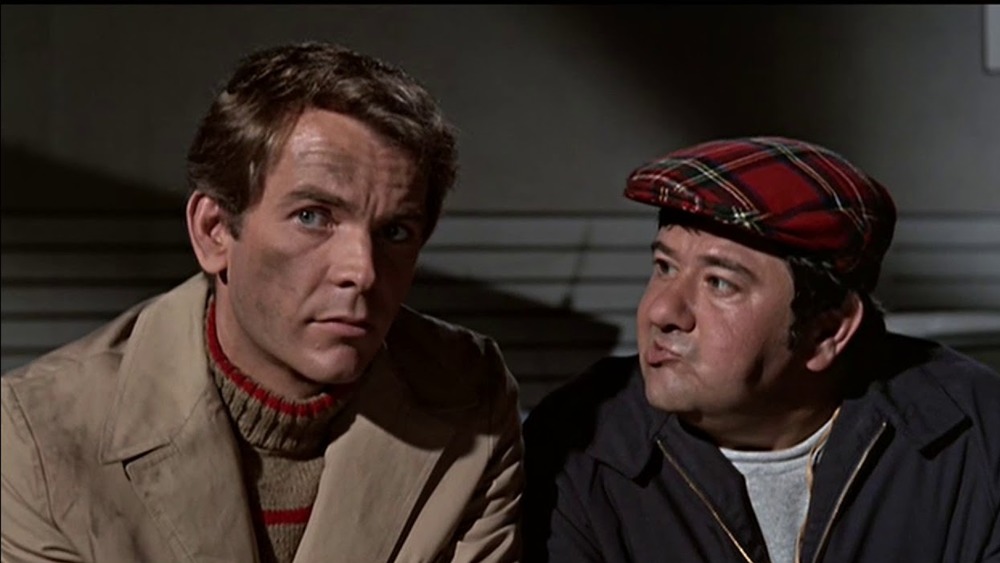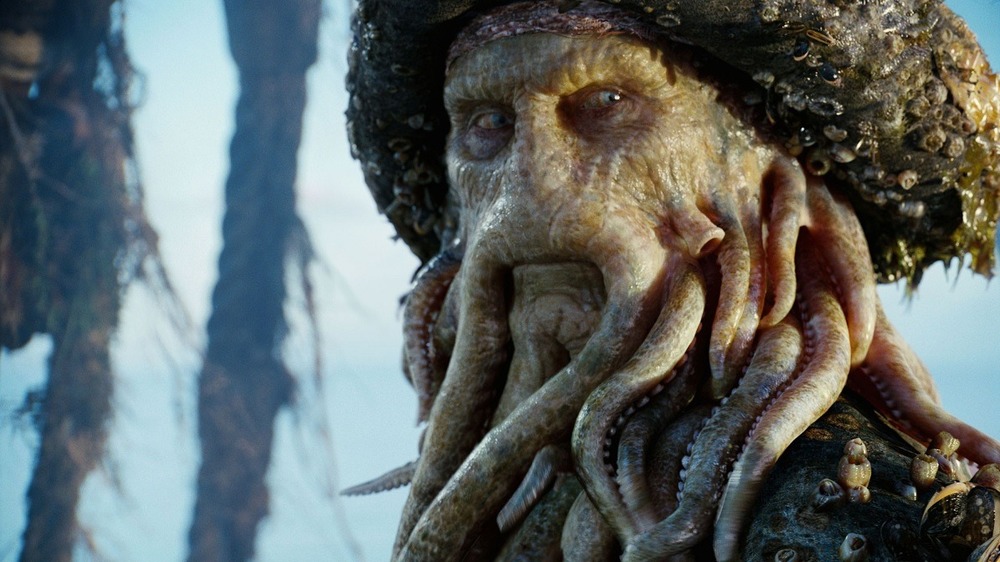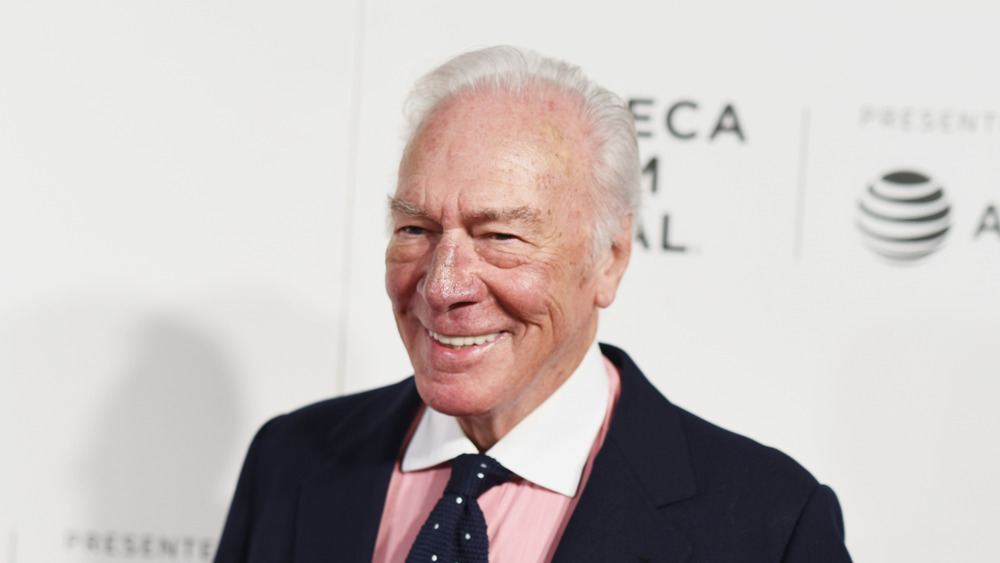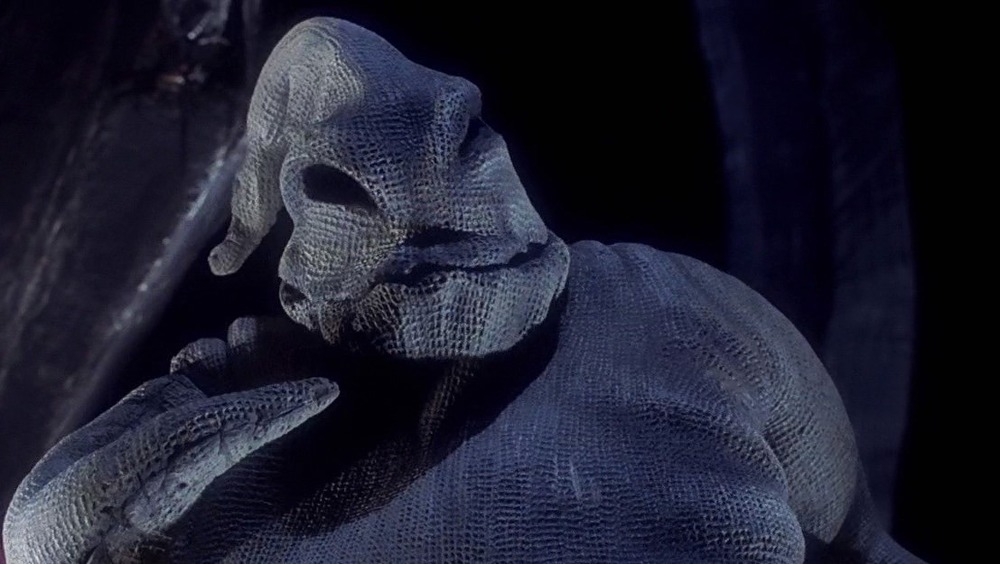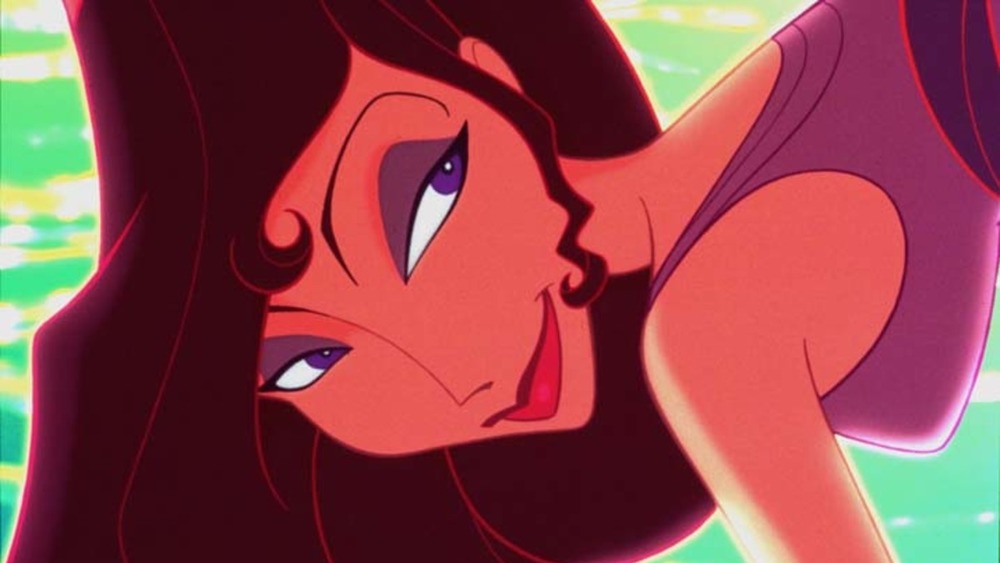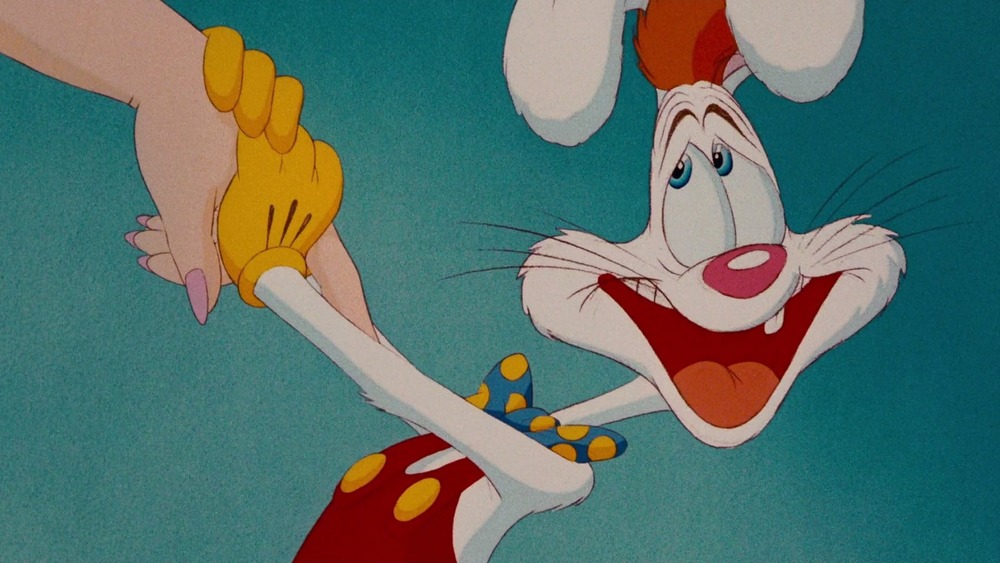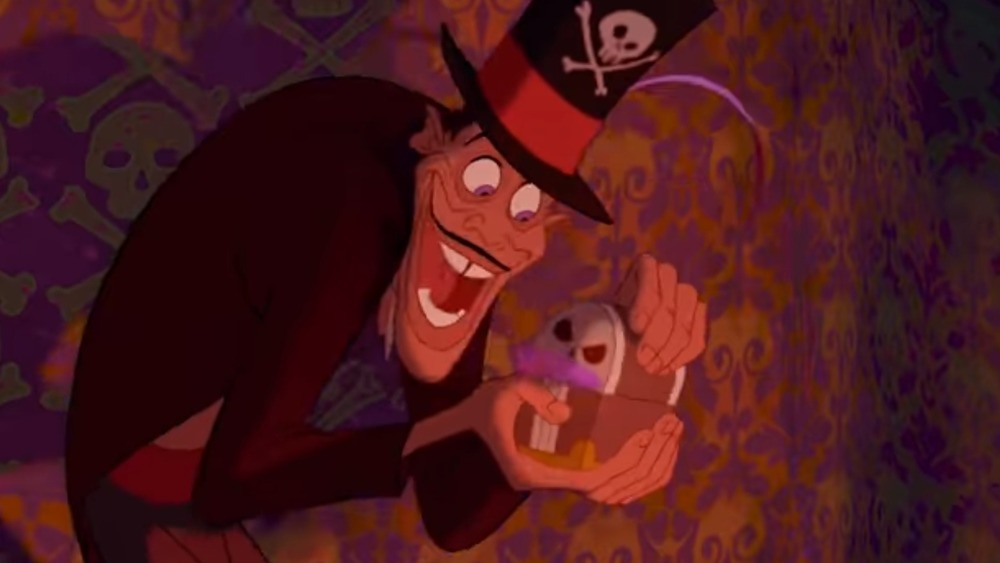Disney Character Backstories We Want To See On Screen
Disney's animated classics have gotten a new lease on life thanks to the studio's love for remaking titles as live-action blockbusters. Disney has spent years bringing some of their most fantastical characters into the real world, including those from Beauty and the Beast to Alice in Wonderland. Revisiting classic movies hasn't just stopped at full remakes, though: Disney has also grown fond of movies that explore the backstories of beloved Disney characters. Box office sensation Maleficent is the most famous example of this trend, as is the upcoming Cruella, which tells the live-action origin story of a woman so frightening that, if she doesn't scare you, no evil thing will.
It's easy to see why Disney is taking this route. Maleficent and Cruella are just two examples of Disney villains with such fascinating personalities that you can't help but wonder where they came from. Meanwhile, the simple narratives of classic Disney kids' movies leave deeper layers of these characters up to the imagination. Character backstories give Disney fresh material with a built-in audience that already knows just enough to be curious.
Disney's love for remaking old movies isn't going away anytime soon, so it's high time to look at other Disney characters whose backstories need to be told.
Ursula From The Little Mermaid
Who doesn't love Ursula? Sure, she may be a villain who tricked Ariel, but she's got such a distinctly theatrical personality — and her show-stopping musical number, Poor Unfortunate Souls, is exceptional. From her rich voice to her character design (inspired by Divine, a drag performer made famous by director John Waters), Ursula is a Disney villain brimming with confidence. Ursula's vampy, campy demeanor is so fascinating in The Little Mermaid that one can't help but yearn for further stories about her past experiences.
Disney's live-action remake of The Little Mermaid is already in progress, but diving into the waters of this charmingly devious antagonist could also answer many fan questions. It can paint a more specific picture of how she became such an isolated, fearsome hermit under the sea and how she first began dabbling in dark magic. Her prior dealings with King Triton could also make for intriguing fodder, particularly if Disney portrayed them as friends turned rivals.
John Silver From Treasure Planet
In one of the most intimate scenes of Treasure Planet, Jim Hawkins (Joseph Gordon-Levitt) asks John Silver how he got his robotic body parts. Looking down at his mechanical hand, Silver pauses before finally responding, "You give up a few things, chasing a dream." This solemn response shows how dedicated Silver is to recovering the treasure from the titular Treasure Planet. It also suggests grand adventures in earlier parts of Silver's life.
Given that Treasure Planet was a massive money-loser for Disney, it's doubtful the studio is aching to revisit this fictional universe. Still, the earlier adventures of John Silver would make for great stories that could expand upon the exciting swashbuckling universe established in the original film. Such a backstory doesn't even have to be fully original; it could lift plot points from an actual prequel to the original Treasure Island novel entitled Porto Bello Gold.
Best of all, viewers could finally discover just how Silver "[gave] up a few things" while chasing down a dream of cosmic riches.
Preston B. Whitmore From Atlantis: The Lost Empire
Atlantis: The Lost Empire isn't short on over-the-top characters. The band of misfits that travel to the mystical city of Atlantis includes everyone from a florist fixated on explosives to a Southern chef and a mole trapped in a human's body. One of the movie's most distinctive figures doesn't even go on the eventual voyage to Atlantis: Preston B. Whitmore (John Mahoney), an eccentric who calls upon the film's protagonist, Milo Thatch (Michael J. Fox), in the middle of the night with a bold proposition to fund the expedition to Atlantis.
From there, Whitmore vanishes from Atlantis: The Lost Empire until the very last scene of the film. Though he has minimal screen time, he tantalizes viewers with hints at a colorful past. The story of how he got his money and how he came to know Lieutenant Helga Katrina Sinclair could make for entertaining storytelling. Diving into his backstory to see what drives Whitemore's love for adventure could deliver sights as dazzling as Atlantis itself.
Madam Mim From The Sword in the Stone
The episodic nature of The Sword in the Stone means that antagonist Madam Mim doesn't have a particularly large presence in the film. In the grand scheme of the movie, she ends up being just one of many colorful fantasy beings the young King Arthur encounters. Still, her magical duel with Merlin is one of the most visually memorable sequences of the project.
Minimal screen time hasn't stopped Mim from becoming a fixture in other Disney properties; for example, she ended up being a recurring character in Scrooge McDuck and Donald Duck comics as an ally of Magica de Spell. Mim's continued presence in Disney media, as well as her memorably ill-tempered behavior in The Sword in the Stone, suggests there's plenty of interesting stories left to tell with this character.
Getting into the details of how her feud with Merlin started, as well as how she became such a master of magic, could make for an intriguing tale, particularly since Mim's messy, rough-and-tumble nature makes her highly unorthodox. She may not have had a lot to do in The Sword in the Stone, but Madam Mim still has plenty of interesting stories left to tell.
Professor Ratigan From The Great Mouse Detective
In the pantheon of Disney villains, it's common to find flamboyant baddies — particularly the bad boys of the 1990s, like The Lion King's Scar and Aladdin's Jafar. But the forefather of this archetype is the enjoyably exaggerated Professor Ratigan from 1986's The Great Mouse Detective. After all, no other Disney villain was brought to life through the deep voice of Vincent Price, an actor who defined ostentatious silver screen adversaries.
Ratigan makes a perfect foil for The Great Mouse Detective's rodent stand-in for Sherlock Holmes. Like many animated Disney villains, Ratigan plummets to his certain demise by the end of the movie, so there's no possibility of seeing him again in further adventures (unless he's creatively resurrected).
But just because Ratigan can't return in any future Mouse Detective stories doesn't mean he has to be entirely absent from the pop culture landscape. Going back in time and seeing how Ratigan earned his status as "the greatest criminal mastermind" would give audiences more of Ratigan's deviously extravagant persona. Plus, such a tale wouldn't just be Great Mouse Detective redux. Ratigan's backstory would probably call for a story more akin to classic James Cagney gangster movies. A unique style and more bombastic Ratigan antics — what more could fans ask for?
Tennessee Steinmetz From The Love Bug
Scuttle the Seagull in The Little Mermaid wasn't the only Disney character portrayed by famous comedian Buddy Hackett. Twenty years prior, Hackett played Tennessee Steinmetz in the live-action family film The Love Bug. The best friend of the film's protagonist, Jim Douglas, Steinmetz uses pieces of automobiles as props for his artistic projects. This oddity is already enough to make Tennessee fascinating. However, Steinmetz's quirkiness doesn't end there; the philosophizing Steinmetz also likes to brag about his enlightening spiritual experiences with Tibetan monks.
Those tales hint at a past that could be rife for exploration. Sending such a wacky character on far-flung adventures could create many comic scenarios. Plus, audiences could finally get an answer as to why he's so obsessed with using car parts for artwork. Cars 2 and Olaf's Frozen Adventure demonstrated the downsides of making longer-form stories about Disney sidekicks, but there's enough potential in the backstories of Buddy Hackett's first Disney character to make it a risk worth taking.
Davy Jones From Pirates of the Caribbean
Davy Jones (Bill Nighy) wasn't always the tentacle-covered captain of The Flying Dutchman. Once upon a time, he was just a normal sailor on the high seas. However, his romance with the goddess Calypso put him on a path to becoming the literally heartless captain of a ship full of lost souls. Moviegoers got to hear all about Davy Jones' past throughout the first two Pirates of the Caribbean sequels, but there's a big difference between hearing about something and actually seeing it.
If there was ever a Pirates of the Caribbean character whose backstory could stand on its own as a satisfying story, it's Jones. Tragic romances can be downright captivating when executed properly. Delving into his backstory could also provide more depth to the version of Jones we see in films like Dead Man's Chest, where flickers of humanity peek out from beneath his monstrous appearance. Watching Jones' transformation from ordinary human to monster could provide a treasure trove of fascinating material and stunning visuals.
John Adams Gates From National Treasure
At the beginning of the first installment in the National Treasure series, the adolescent Ben Gates is enthralled by the stories of his grandfather, John Adams Gates (Christopher Plummer). Though his own father thinks the tales are full of nonsense, John knows that there's glory to be uncovered in this world. John instills in his grandson a love for both history and treasure-hunting that drives the plot of the movie forward, so it's no exaggeration to say that he's the heart and soul of this franchise.
It's hard to believe that he's only prominently featured in the opening scene of the first National Treasure. The rest of that film and its sequel, Book of Secrets, focused on the adventures of Ben Gates. Perhaps it's time to change that. Discovering how John became enamored with American history could lay the groundwork for exciting escapades. Given John's age, these would also have to be period-era adventures; as the Indiana Jones movies have shown, these kinds of tales can be smashing financial successes. The story of John Adams Gates is its own kind of treasure just waiting to be unearthed.
Oogie Boogie From The Nightmare Before Christmas
The principal antagonist of The Nightmare Before Christmas is also its protagonist: Jack Skellington, who must battle against his worst impulses. He is, after all, the one who ruins Christmas for everyone and orchestrates the kidnapping of Sandy Claws. Eventually, though, a greater foe emerges whom Skellington must take down. That foe is Oogie Boogie, a figure so evil that even The Pumpkin King reviles him. Oogie Boogie's vileness is on full display during his big musical number, during which he tortures Sandy Claws.
Despite being eventually revealed to be nothing more than a bunch of bugs wrapped in burlap, Oogie Boogie looms large in the imagination. Exploring his backstory could explain how he got such a fearsome reputation, and dive deeper into the longstanding rivalry between Jack and Oogie Boogie that The Nightmare Before Christmas merely mentions. Oogie Boogie is a memorable foe, and his history could prove captivating in the right hands.
Meg From Hercules
In Hercules, the sultry, sardonic Megara eventually develops feelings for the good guy who put the glad in gladiator. She's emotionally conflicted, however, since she's indebted to Hercules' nemesis, Hades. To persuade Meg to remain firmly on his side, Hades reminds her of the circumstances that led to her servitude. "You sold your soul to me to save your boyfriend's life," Hades explains. "And how does this creep thank you? By running off with some babe. He hurt you real bad, didn't he, Meg?" Jilted and jaded, Meg has sworn off anything even vaguely resembling romance. Being reminded of her past is enough to get Meg to remember why she "won't say [she's] in love."
It's an unusually dark backstory for an unusually complex Disney heroine, and one that could be interesting to watch unfold in a feature-length film. Meg's snarky personality could leaven her past's undeniable tragic elements. Plus, Hades and Meg are two of the most enjoyable parts of Hercules, so audiences would be thrilled to see them get more time on screen. The House of Mouse is already at work on a live-action remake of the original, but we'd love to see more entries in this Greek mythology-inspired series.
Roger Rabbit From Who Framed Roger Rabbit
Roger Rabbit isn't the kind of character one normally associates with a rich backstory. A goofy pastiche of classic cartoon characters like Bugs Bunny, Roger Rabbit gets anvils dropped on his head, not detailed origin myths. However, proposed follow-ups to Who Framed Roger Rabbit have included never-made prequels that would explore how Roger Rabbit became such a star. In one script, Roger and other cartoon characters team up to fight Nazis during World War II; in another, Roger is an aspiring actor waiting for his big break on Broadway.
None of these projects have ever gotten any traction, and Who Framed Roger Rabbit director Robert Zemeckis has expressed serious doubt that any future Roger Rabbit films will be made. Still, these possible prequels suggest that there's more to Roger than meets the eye. A prequel would be a fun opportunity to update the original film's groundbreaking visual effects, which blended the Golden Age of American animation with live-action footage.
Dr. Facilier From The Princess and the Frog
If there's any scene that captures all the visual possibilities of hand-drawn animation, it's Dr. Facilier's musical number Friends on the Other Side from The Princess and the Frog. The vibrant, otherworldly, show-stopping scene was not only a feast for the eyes, but also an effective way to establish Facilier's magnetic malevolence.
Such a multifaceted and charming character is ripe for further exploration. How did Facilier get so indebted to the shadowy creatures with whom he communes using voodoo techniques? That's left a mystery in The Princess and the Frog, but could be explored further. This origin story could also explain how Facilier developed his sly slickness; after all, master con artists are made, not born. A story set in 19th-century New Orleans would be a treat. We're sure everyone would enjoy more sequences like Friends on the Other Side.
